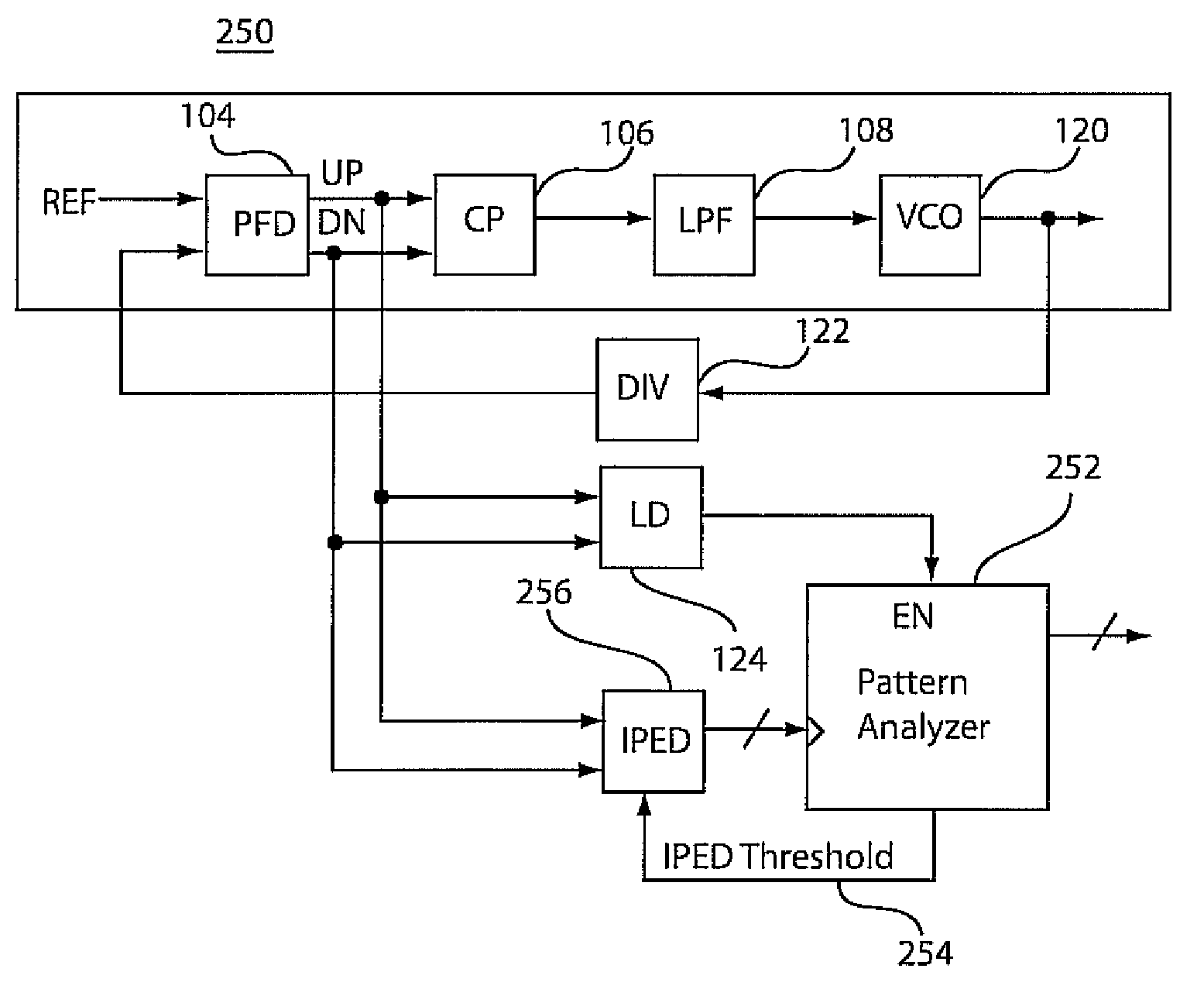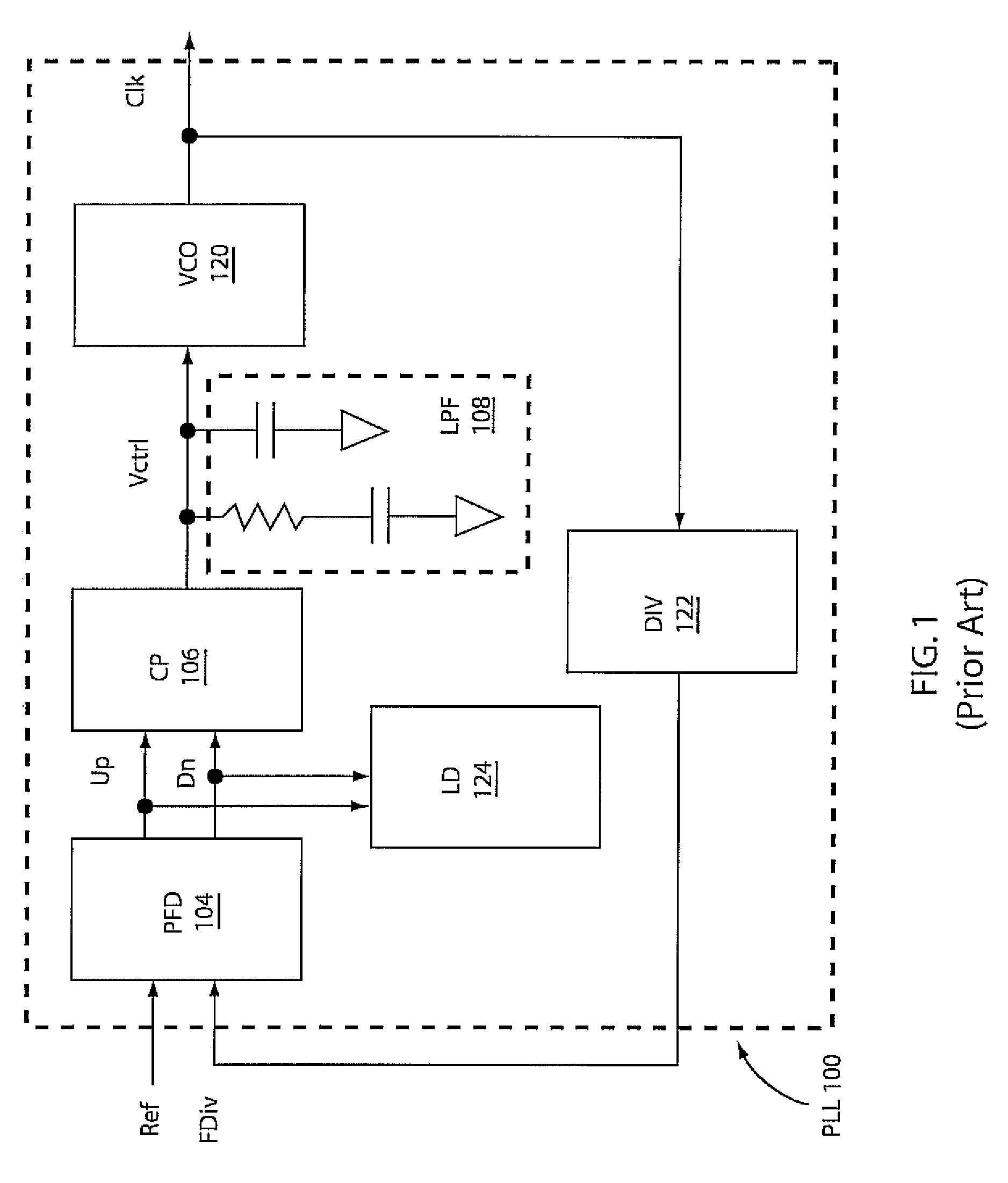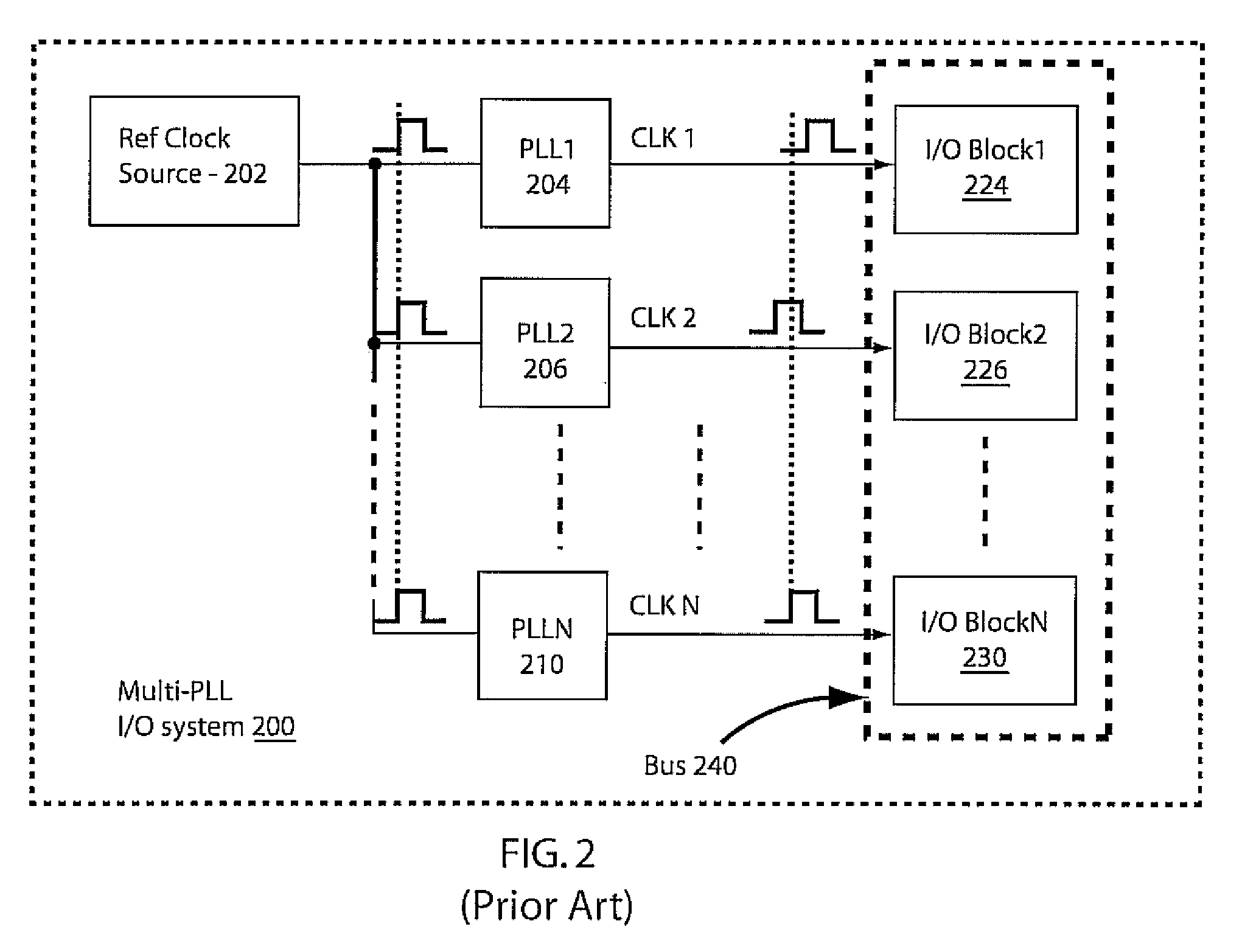Automatic static phase error and jitter compensation in PLL circuits
a phase error and jitter compensation technology, applied in the field of phase-locked loop (pll) circuit performance enhancement, can solve the problems of increasing the difficulty of prediction and control, increasing the complexity of the circuit, and the performance of key circuit elements such as current mirrors, and affecting the performance of analog circuits, so as to achieve automatic optimization of the jitter performance of the pll
- Summary
- Abstract
- Description
- Claims
- Application Information
AI Technical Summary
Benefits of technology
Problems solved by technology
Method used
Image
Examples
Embodiment Construction
[0027]Embodiments in accordance with the present principles address the following issues. An efficient way to automatically adjust static phase error of a phase locked loop (PLL) is addressed. Typically, it is desirable for PLL static phase error to be as close to zero as possible. In accordance with one feature, automatic realization of a minimum mean static phase error is provided, or, alternately, the realization of a given fixed target value of static phase error. In both cases, the static phase error is dynamically maintained during PLL operation.
[0028]A second issue that is addressed includes the development of an efficient way to automatically optimize the jitter performance of a PLL. In general, overall PLL jitter performance is dependent on both internally generated jitter (such as from a voltage controlled oscillator (VCO)) as well as unknown external sources of jitter (such as from a reference clock). One way to optimize PLL jitter performance is to dynamically adjust PLL...
PUM
 Login to View More
Login to View More Abstract
Description
Claims
Application Information
 Login to View More
Login to View More - R&D
- Intellectual Property
- Life Sciences
- Materials
- Tech Scout
- Unparalleled Data Quality
- Higher Quality Content
- 60% Fewer Hallucinations
Browse by: Latest US Patents, China's latest patents, Technical Efficacy Thesaurus, Application Domain, Technology Topic, Popular Technical Reports.
© 2025 PatSnap. All rights reserved.Legal|Privacy policy|Modern Slavery Act Transparency Statement|Sitemap|About US| Contact US: help@patsnap.com



